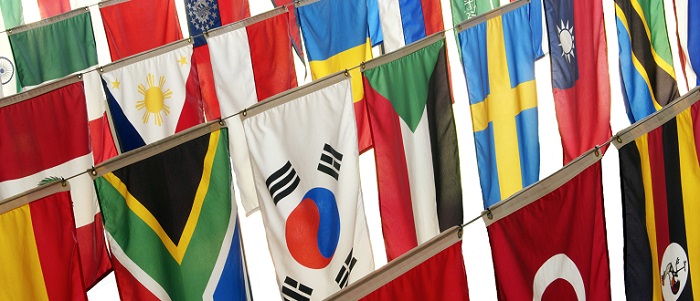I recently re-read Marc Pritchard’s powerful call for a new media supply chain that “levels the playing field and operates in a way that is clean, efficient, accountable and properly moderated for everyone involved.”
The marketing community tends to be reading the same tea leaves, but P&G’s voice often galvanizes industry to act because of its position in the market. The timing of Pritchard’s speech could not be more opportune from my point of view—we signaled our commitment to re-building our industry with greater quality, transparency, control and privacy when we announced our last round of financing last year.
The current digital supply chain is failing both advertisers and publishers, much less consumers. But not even P&G, with all its advertising might, can right the ship alone. And they are just one side of the solution—publishers are ready for this work as well. It will take a motivated and united alliance of leading marketers and agencies, working with the right tech companies and the right publishers, with the right values and purpose, to build this new production line.
Here’s what needs to be done.
Quality
Pritchard says that P&G will “invest in places where brands are proven safe, where the content is known and controlled and where there is third-party measurement, auditing and accountability.”
We get it. By focusing on partners with aligned values, we reward those that are working for better outcomes for marketers, publishers and consumers. We’ve already taken proactive steps on behalf of our clients as a class to ensure our supply-side partners truly add value, such as having better access to fraud-free supply. The supply chain code of conduct that our industry must enforce and uphold includes:
- Actively monitoring for auction games and other behaviors that are not in brands’ best interest like unnecessary fees, and not buying from supply providers that violate this;
- Shaping supply to work for brands by using supply-path optimization (SPO) to find the cleanest, most direct and performant pathways to the underlying impression. We must reduce unnecessary intermediaries by enabling our inventory to be obtained in two or fewer “hops” or connection points to the actual inventory source;
- Increasing transparency and lowering costs, passing value back to the marketer; and
- Rewarding publishers that do it right with greater investment, and better yield.
Independence
With the fragility of the Google ID, Facebook’s measurement discrepancies and new formats and channels without the same standards as “legacy digital”—television, out of home, audio—brands and agencies need partners capable of supporting off-platform and cross-platform measurement. The success of their marketing, their ability to build a stable marketing organization, infrastructure and process depends on it.
Brands and agencies deserve and should increasingly demand a scaled, open, integrated DMP and DSP, free from the conflict of interest and privacy concerns associated with owning a media platform that collects and processes sensitive and personally identifiable information for purposes not necessary for advertising. We can and must unify data with privacy-friendly, GDPR-compliant marketing solutions. The data relationships belong to brands, and they should be viewed and analyzed within analytics products or exported to them at the event level—keyed off pseudonymous user IDs—for their own analysis.
Privacy
The industry must share P&G’s commitment to consumer privacy in law and, most importantly, in practice. Like P&G, we have been working with the Privacy for America coalition. We recognize that the GDPR and the California Consumer Privacy Act strongly signal the desire of policymakers to put consumers first and update law for the digital age. We will work to honor the letter and the spirit of these laws, but believe that one set of strong standards would be better than a patchwork of state laws of varying quality. We wait with anticipation to see how Congress responds to the Privacy for America proposal, to determine if it is the right fit for better protecting consumers from harm while delineating for industry which practices are reasonable or not in the digital economy without favoring and further concentrating market power in the hands of a few.
Control
Marketers deserve better accountability and outcomes from their advertising. We know that one of the ways in which marketers have aspired to the latter in recent years is through “in-housing” technology ownership and changing up their relationships with agencies. Yet, we see day in and day out the importance of brands’ partners in acting as trusted advisors that manage media-buying operations and bring new approaches and ideas to foster stronger brand outcomes.
We believe that increasingly brands will adopt a model of “triangulation” in which the brand, agency and tech partner each has an important seat at the table in driving strategy and operations. We see it as less about wrestling control away from one entity and more, as Pritchard puts it, about “discerning what work should be done [in house] versus what work should be done externally.”
What’s next?
The above is going to take a lot of work. The foundations are there. We’ve modernized the technical integrations and recrafted commercial relationships so they better align with marketer business goals and are transparent for all parties and respectful of their interests including, and especially, consumers.
Once we have an addressable and accountable supply chain, what should we do with it? It would be the perfect environment for deep attribution to the true business goals of marketers. It would mean replacing media proxies that treat impressions as commodities for data-driven campaigns and relationships as the ingredients to true business outcomes—sales in the moment and over time.
In order to make sense of the volume of impressions and insights, we simply must use math—sophisticated AI/ML that harnesses the billions of real-time connections that take place every day and turns them into results. Our long-standing capabilities in allowing sophisticated marketers to bring their own—or IBM Watson’s—attribution, optimization and data science find their best expression on top of this modernized supply chain.
Over the last three quarters, our team has been working with our supply partners, clients and industry trade associations to do our part in creating an aligned ecosystem built on principles and values that we can manifest in code. The purpose of the work we have started to create a more accountable, addressable supply chain is to make good advertising—benefiting people as consumers, and the companies and causes they support.
I will be a loud voice on these issues and put our company’s decade-long legacy of leadership and innovation behind my words as we pledge an even deeper commitment to creating, in the words of Mr. Pritchard, “a new media supply chain that is both a force for growth and a force for good.”









